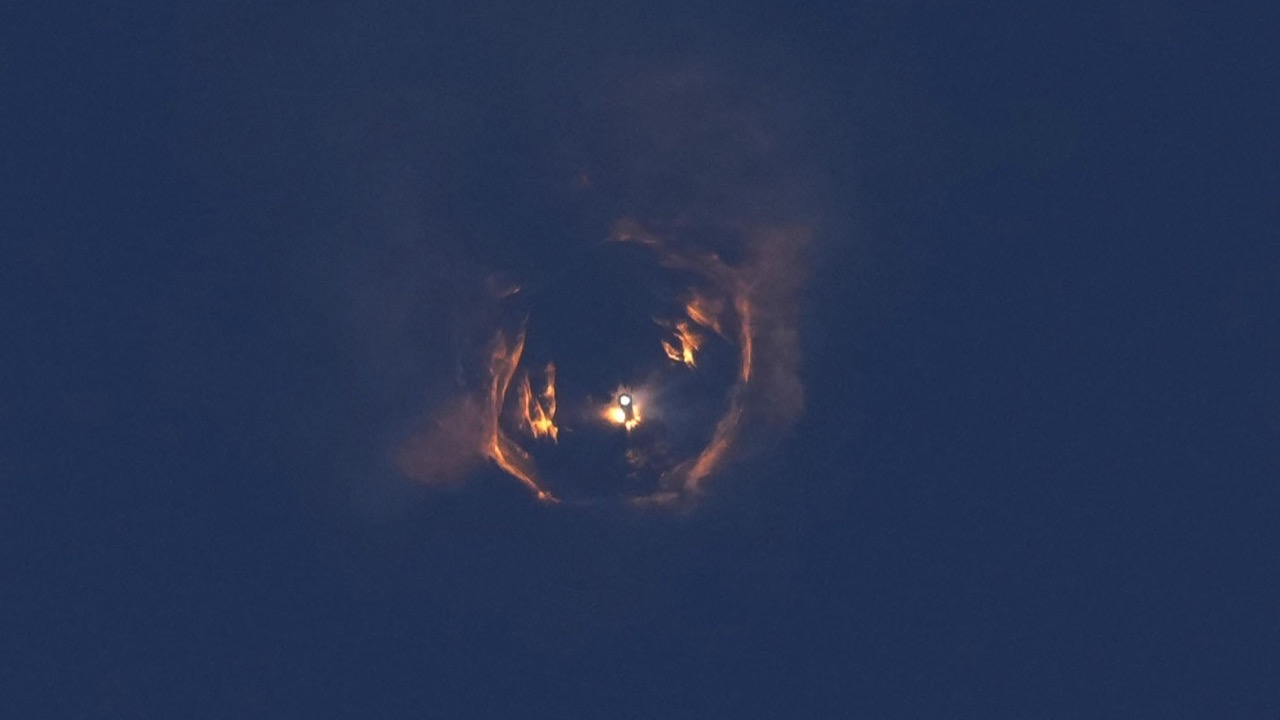SpaceX's latest Starship test flight ends in uncertainty as contact is lost with the spacecraft during its descent. (AP/Eric Gay)

- SpaceX's Starship rocket lost contact during its latest test flight, failing to complete its planned hour-long mission.
- The spacecraft reached an altitude of 90 miles before encountering problems, with its fate and landing location unknown.
- Despite setbacks, SpaceX continues to develop Starship for NASA's lunar missions and Elon Musk's Mars ambitions.
Share
Nearly two months after an explosion sent flaming debris raining down on the Turks and Caicos, SpaceX launched another mammoth Starship rocket on Thursday, but lost contact minutes into the test flight as the spacecraft came tumbling down.
The 403-foot (123-meter) rocket blasted off from Texas a little before sunset. SpaceX caught the first-stage booster back at the pad with giant mechanical arms, but engines on the spacecraft on top started shutting down as it streaked eastward for what was supposed to be a controlled entry over the Indian Ocean, half a world away. Contact was lost with the spacecraft as it went into an out-of-control spin.
The space-skimming flight was supposed to last an hour and couldn’t release the mock satellites into space as planned. The spacecraft reached nearly 90 miles (150 kilometers) in altitude before trouble struck. It was not immediately clear where it came down.
“Unfortunately this happened last time too, so we have some practice at this now,” SpaceX flight commentator Dan Huot said from the launch site.
Related Story: SpaceX Launch Accident Likely Caused by Fire That Sent Trails of Flaming Debris Near the Caribbean
NASA’s Lunar Ambitions and SpaceX’s Mars Goals
NASA has booked Starship to land its astronauts on the moon later this decade. SpaceX’s Elon Musk is aiming for Mars with Starship, the world’s biggest and most powerful rocket.
Like last time, Starship had four mock satellites to release once the craft reached space on this eighth test flight as a practice for future missions. They resembled SpaceX’s Starlink internet satellites, thousands of which currently orbit Earth, and were meant to fall back down following their brief taste of space.
Starship’s flaps, computers and fuel system were redesigned in preparation for the next big step: returning the spacecraft to the launch site just like the booster.
During the last demo, SpaceX captured the booster at the launch pad, but the spacecraft blew up several minutes later over the Atlantic. No injuries or major damage were reported.
According to an investigation that remains ongoing, leaking fuel triggered a series of fires that shut down the spacecraft’s engines. The on-board self-destruct system kicked in as planned.
SpaceX said it made several improvements to the spacecraft following the accident, and the Federal Aviation Administration recently cleared Starship once more for launch.
Starships soar out of the southernmost tip of Texas near the Mexican border. SpaceX is building another Starship complex at Cape Canaveral, Florida, home to the company’s smaller Falcon rockets that ferry astronauts and satellites to orbit.
___
The Associated Press Health and Science Department receives support from the Howard Hughes Medical Institute’s Science and Educational Media Group and the Robert Wood Johnson Foundation. The AP is solely responsible for all content.



















